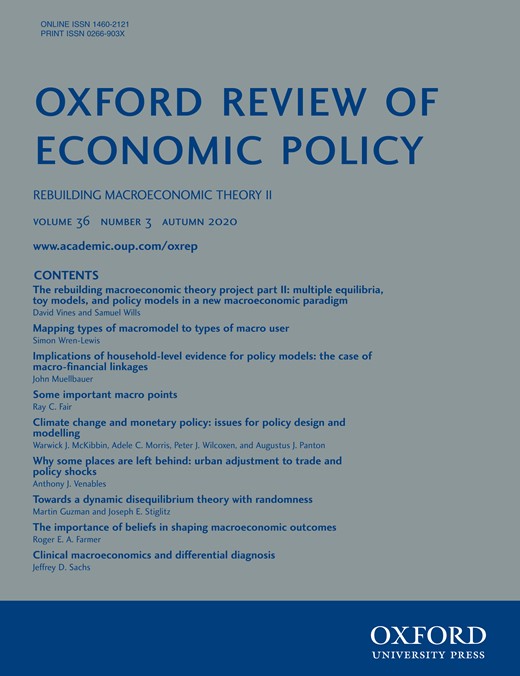-
Views
-
Cite
Cite
David Vines, Samuel Wills, The rebuilding macroeconomic theory project part II: multiple equilibria, toy models, and policy models in a new macroeconomic paradigm, Oxford Review of Economic Policy, Volume 36, Issue 3, Autumn 2020, Pages 427–497, https://doi.org/10.1093/oxrep/graa066
Close - Share Icon Share
Abstract
This issue of the Oxford Review of Economic Policy is the second in the Rebuilding Macroeconomic Theory project. The papers in the first issue proposed specific improvements to the New-Keynesian Dynamic Stochastic General Equilibrium (NK-DSGE) framework, in response to the events of the 2008 crisis. This issue goes further. We, as editors, now argue that a new multiple-equilibrium and diverse (MEADE) paradigm is needed for macroeconomics. It will emphasize that economies can have more than one stable outcome, and study why. It will require using both toy models, which enable a quick, first-pass, intuitive understanding of a question, and policy models (aka structural economic models) which develop a detailed empirical understanding of the economy. We argue that the seminal IS/LM, Solow–Swan, Ramsey, Real Business Cycle, Taylor, and Clarida/Galí/Gertler models have all been toys, as is the benchmark NK-DSGE model. In the past the models have adapted as the questions changed, and the NK-DSGE model must now do this since it has failed to capture both the salient aspects of the lead-up to the 2008 crisis and the slow recovery afterwards. The way forward in the MEADE paradigm will be to start with simple models, ideally two-dimensional sketches, that explain mechanisms that can cause multiple equilibria. These mechanisms should then be incorporated into larger DSGE models in a new, multiple-equilibrium synthesis. All of this will need to be informed by closer fidelity to the data, drawing on lessons obtained from detailed work on policy models.



